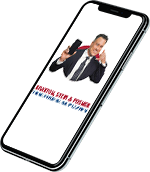Image:http://pixabay.com/en/glass-crack-broken-broken-glass-101792/
Defective Product Cases Can Be Quite Complex
If you’ve ever bought something only to have it break a few days later, you know how frustrating it is. Few things cause more irritation than spending your money on a piece of junk, especially if you can’t return it for a refund or replacement. But while some poorly made products merely cause irritation and inconvenience, other malfunctioning or ill-made products can actually cause serious bodily harm. If you have been injured by a defective product, you may be wondering whether you have grounds for a personal injury claim. Defective products lawsuits can be difficult to prove, and there are a lot of restrictions on such cases, so it is essential that you know the basics before deciding to launch an injury claim.
10 Things to Keep in Mind
Image: http://pixabay.com/en/human-brain-think-20424/
If one or more of these conditions are met, you may have a viable claim:
- You must actually have been injured by the product. You might have a legitimately defective product on your hands, but unless it has caused you bodily harm, you cannot wage a personal injury suit.
- You used the product correctly and followed all directions that came with it. If the directions were missing or inadequate, you have a strong chance of winning a lawsuit.
- You did not change the design or mechanism of the product in any way.
- The product was defectively manufactured. This means that there was a problem with it when it was made at the factory, and it is different from the other products that were made at the same time. For example, if one batch of medicine was tainted, or if your particular toaster had exposed wires, you have a defectively manufactured product.
- The product was defectively designed. This means that every item in the line is defective, stemming from an unsafe or insufficient concept for the product. For example, a baby crib with places for a child’s head to get caught or a truck that has a tendency to flip in high winds would be defectively designed products.
- The product was marketed incorrectly. This can include a failure to provide warning labels or to include sufficient directions.
- You did not know the product was defective prior to using it. If you already knew, you may still have grounds for an injury suit, but your chance of winning, as well as the amount of damages you could take home, are greatly reduced.
- You have not exceeded the statute of limitation. In every state, there are time limits as to how long you can wait after your injury before opening up a lawsuit. In Florida, the statute of limitations is four years.
- You have not exceeded the statute of repose, a time limit that regulates how long after a product is manufactured that you can still open up a lawsuit. The limit usually corresponds to what is considered the “expected useful life” of the product. Under Florida law, the statute of repose is 10 years for most products, although planes, trains, and vehicles weighing more than 100 tons have a 20 year statute of repose.
- You have consulted with a personal injury attorney. Because these cases can be lengthy and costly and because they can be difficult to argue, you should discuss your injury with a lawyer before making any final decisions about a lawsuit.When you have been injured by a dangerous or defective product, a personal injury attorney can conduct an extensive investigation to make sure your circumstances meet all the requirements for a viable lawsuit. If it is determined that you do have a legitimate defective products case, negotiations or litigation can begin to pursue the compensation you deserve.
About the Author:
Jeffrey Braxton is a trial lawyer in Fort Lauderdale who has devoted his 22-year career to the practice of personal injury law. As lead trial attorney for The South Florida Injury Law Firm, Jeff has litigated thousands of cases and is a member of the Million Dollar Advocates Forum, an exclusive group of attorneys who have resolved cases in excess of one million dollars.




